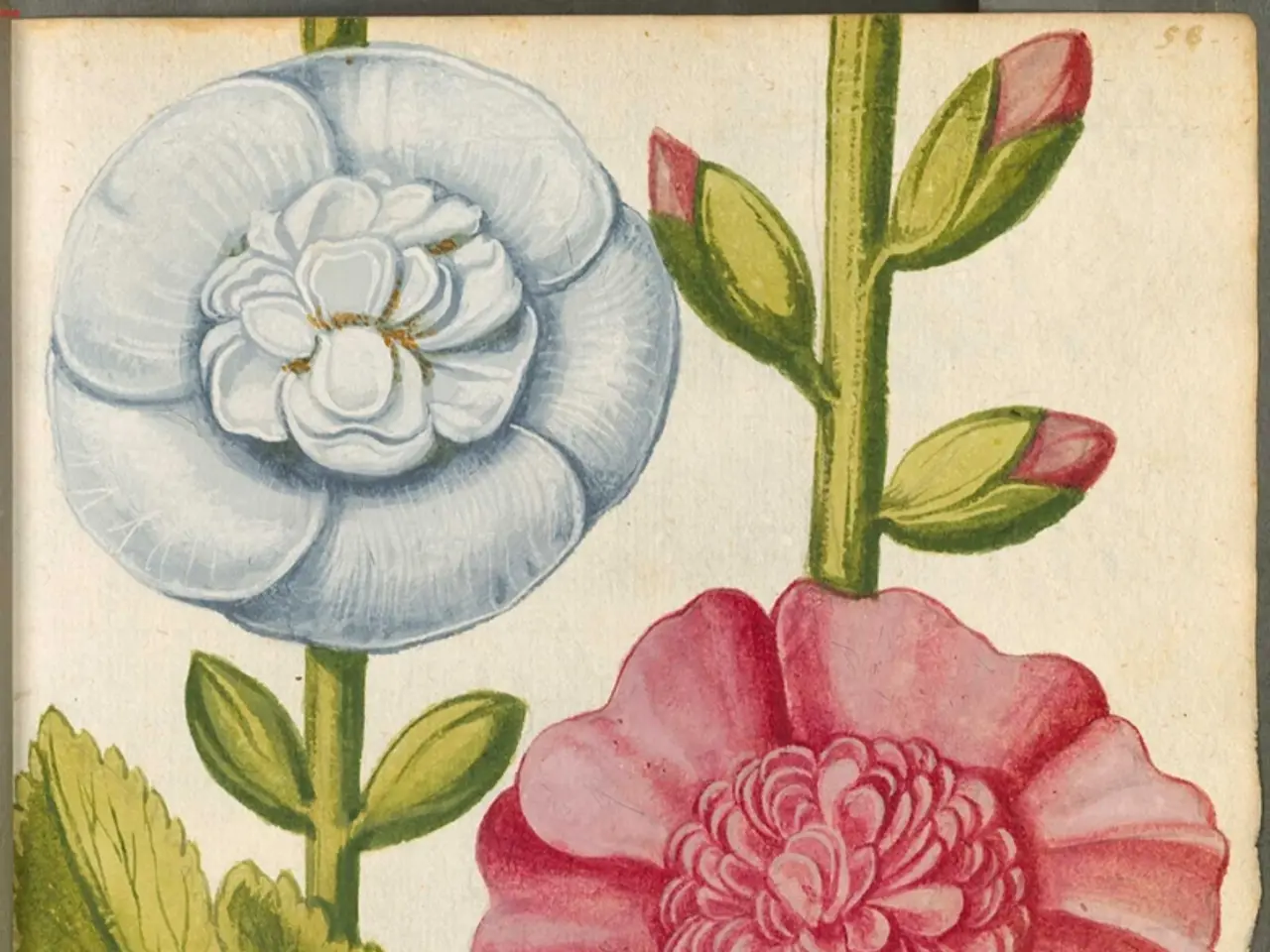Renaissance Art and AI-Driven Creations at Chiostro del Bramante
The Chiostro del Bramante in Rome is hosting an extraordinary exhibition, titled "Flowers - Art from the Renaissance to Artificial Intelligence." This unique showcase invites visitors on a captivating journey through five centuries of floral depiction in art, seamlessly blending tradition with modern technology.
The exhibition, co-curated by Roger Diederen, Franziska Stohr, and Suzanne Landau, showcases over 90 artworks from ten different countries. It features collaborations with prestigious institutions such as the Louvre, Musee d'Orsay, Petit Palais, and Musee des Arts Decoratifs in Paris, alongside the botanical and scientific collections of the Royal Botanic Gardens, Kew in London and the Museo Civico di Zoologia in Rome.
The exhibition delves into the profound influence of flowers on artistic expression across centuries. It showcases masterpieces from the Renaissance, including Jan Brueghel's work, which depicts flowers as silent protagonists in a symbolic universe. Contemporary artists like Ai Weiwei and Kapwani Kiwanga also contribute to the exhibition, using flowers as a metaphor for resistance.
In addition to traditional paintings and sculptures, the exhibition features site-specific installations, manuscripts, hangings, photographs, and even works that utilize augmented reality and artificial intelligence. For instance, Miguel Chevalier explores the question of the naturalness and artificiality of flowers, while Studio Drift's installations are inspired by natural processes.
The space is flourishing with colours, perfumes, and idyllic sounds, offering a unique sensory experience. Kehinde Wiley offers an interpretation of the floral theme, while Girolamo Pini's attention to botanical detail is showcased. Edward Burne-Jones and William Morris' delicate floral representations are also part of the exhibition.
Austin Young's installation transforms the exterior of the Chiostro del Bramante into an earthly paradise, while Rebecca Louise Law builds a floral corridor for a truly immersive experience. The exhibition serves as a manifesto for sustainability, inviting visitors to look at nature from a new perspective.
Natalia de Marco, Artistic Director of the Chiostro del Bramante, states that flowers are universal symbols representing every aspect of life. This exhibition is a dynamic show that reflects a dialogue between historical heritage and present-day digital experimentation, emphasizing sustainability, botany, and the evolving aesthetics of nature through AI-driven art forms.
The exhibition is open from February 14th, 2025, to January 18th, 2026. The opening hours are Monday to Friday, 10 am to 8 pm; Saturday, Sunday, and public holidays, 10 am to 9 pm. Tickets can be purchased on Chiostro Del Bramante's website. Don't miss this extraordinary exploration of the beauty and symbolism of flowers in art!
[1] This sentence is a summary of the last paragraph and can be omitted for clarity.
- The exhibition, "Flowers - Art from the Renaissance to Artificial Intelligence," at Chiostro del Bramante in Rome, features collaborations from esteemed institutions such as the Louvre, Musee d'Orsay, Petit Palais, Musee des Arts Decoratifs in Paris, the Royal Botanic Gardens, Kew in London, and the Museo Civico di Zoologia in Rome.
- The event showcases over 90 artworks from ten countries, blending traditional floral depiction with modern technology, including augmented reality and artificial intelligence pieces by artists like Miguel Chevalier and Studio Drift.
- Contemporary artists like Ai Weiwei and Kapwani Kiwanga use flowers as a metaphor for resistance, while works from masterpieces of the Renaissance, such as Jan Brueghel's, depict flowers as silent protagonists in a symbolic universe.
- site-specific installations, manuscripts, hangings, photographs, and even works that utilize augmented reality and artificial intelligence are part of the exhibition, offering a unique sensory experience with colors, perfumes, and idyllic sounds.
- Natalia de Marco, the Artistic Director of the Chiostro del Bramante, emphasizes that flowers are universal symbols of life and the exhibition serves as a manifesto for sustainability, inviting visitors to look at nature from a new perspective, focusing on botany and the evolving aesthetics of nature through AI-driven art forms.




